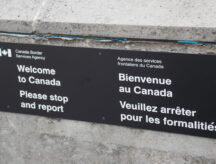How newcomers to Canada can guard against online disinformation with the rise of AI-generated fakes
In a recent survey conducted by Maru Public Opinion, 48% of Canadians who took the survey said “that they are not confident in their ability to distinguish … online/social media content generated by AI [Artificial Intelligence] versus content created by humans.”
On a larger level, this number is notable because it suggests that almost half of Canadians are unsure they can decide what is real and what is fake. Adding this to the fact that 71% of respondents indicated they do not believe “governments will … be able to regulate companies that generate AI content for online/social media use”, it is evident that being victimized by online disinformation is a significant concern for people around the country.
For reasons ranging from a lack of familiarity with AI content to increased vulnerability because they are willing to do whatever it takes to come to Canada, recent and prospective Canadian newcomers may be more likely than the average Canadian to fall victim to AI-generated fake content.
Discover if You Are Eligible for Canadian Immigration
What follows will provide newcomers to Canada with an overview of the recent proliferation of AI and tips on protecting themselves from online disinformation.
The rapid growth of AI
In more recent history, the use of AI has grown exponentially. From industries such as social media (chatbots) to finance and healthcare (task automation), AI has been a resource that has simplified work for human workforces in many ways.
On the other hand, the growth of AI has also seen an increasing number of bad actors using this technology to spread disinformation, victimize families and execute scams, among other negative actions. In fact, a CBC report from June this year noted that scammers used voice-cloning AI to scam a Saskatchewan woman out of more than $7000 by impersonating her grandson.
More generally, AI has also been used to create fake images and other pieces of content that have tricked people into believing things that are not true. “Deepfakes”, as they are known, are created using “a real person’s document, taking a photo from it and turning it into a 3D persona.” Across Canada, data collected by online identity verification service Sumsub says that “the proportion of deepfakes” rose from 0.1% in 2022 to 4.6% in Q1 2023.
Although AI has clear benefits for the Canadian workforce and daily life in this country, it is crucial that people all over Canada – and especially typically targeted groups such as prospective and recent newcomers – remain aware of AI and understand what they can do to make sure they keep themselves and their families safe from online disinformation.
Protecting yourself from online disinformation
It is most important to first realize, as a newcomer to Canada, that the governments in this country – both at the federal and provincial levels – are the sole authority on all matters related to immigration and temporary residence.
In other words, it is safe to assume that anything you see online is untrustworthy if a government source cannot be used to reinforce the information.
Beyond checking to see if online content can be verified by a government source, the Government of Canada provides a dedicated webpage with tips on identifying online disinformation, tools for fact-checking and additional resources to help with this process.
Some of the advice given on this page includes:
1. Fact-check information by using a fact-check tool, verifying the source of the content and checking other sources to verify what you see online
There are verified online fact-checking tools that newcomers to Canada can use to see if a piece of news has already been flagged as fake. One of those tools is MediaSmarts Fact search.
Clicking on a piece of content, if it were real, should lead you to the source of the content. If the piece of content you are viewing does not lead you to a source you can confidently say is trustworthy, the content is likely fake.
Finally, see if you can find the content you are viewing in other places online. While this is not a perfect strategy because of the rapid use of AI for negative purposes, online content is less likely to be real if you cannot find it in more than one place.
2. Identify fake social media accounts by looking at the profile photo, verification status, follower-to-engagement ratio and typos
Fake social media accounts, more often than not, will not have a profile picture or it will use one that has been copied from somewhere else online (see the section below on reverse image searches and how to use those for this purpose).
Another sign of a fake account is consistent and clear typos. Spelling mistakes, grammar errors etc. are not usual for real and trusted sources of information.
Finally, unverified accounts on social media platforms with a high number of followers and low engagement (likes, comments etc.) may need to be viewed with extra caution as the Government of Canada views this as a signal that an account may be fake.
3. Conduct a reverse image search
A reverse image search can be conducted on Google and other platforms to see if an image found online appears anywhere else on the internet. For example, a reverse image search can be used to see if the profile picture used by an account is a copy or to verify the legitimacy of a photo based on where else it appears online.
- Do you need Canadian immigration assistance? Contact the Contact Cohen Immigration Law firm by completing our form
- Send us your feedback or your non-legal assistance questions by emailing us at media@canadavisa.com







